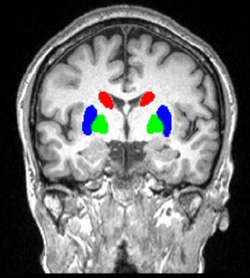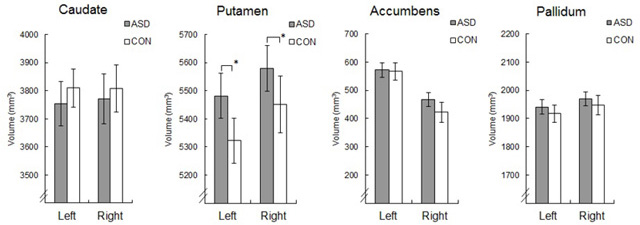SATO Wataru Laboratory
Increased putamen volume in adults with autism spectrum disorder
(Sato*, Kubota*, Kochiyama, Uono, Yoshimura, Sawada, Sakihama, & Toichi (* equal contributors): Front Hum Neurosci)
Basal ganglia (BG) abnormalities are implicated in the pathophysiology of autism spectrum disorder (ASD).
However, studies measuring the volume of the entire BG in individuals with ASD have reported discrepant findings, and no study conducted volume measurement of the entire substructures of the BG (the caudate, putamen, nucleus accumbens, and globus pallidus) in individuals with ASD.
We delineated the BG substructures and measured their volumes in 29 adults with ASD without intellectual disabilities and 29 age- and gender-matched typically developed adult controls.
We acquired T1-weighted anatomical images and performed semi-automated delineation and volume measurements of the above-mentioned subregions.
Total cerebral volumes, sex, and ages were partialed out.

Compared with controls, the putamen was significantly larger in the ASD group.

The increased volume of the putamen found in high-functioning adults with ASD suggests that structural or histological abnormalities of the putamen may underlie the pathologies of ASD such as repetitive and stereotyped behaviors and impaired social interactions.
Return to
Recent Research.
Return to
Main Menu.

